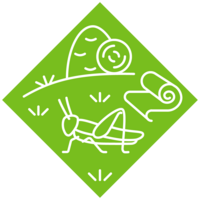Meadows plus cattle equals food for humans. This simple formula could be much more complex. Green waste can be used to produce feed for pigs, rodents or insects, or to extract fibre for paper production. In our grassland without ruminants experimental field, we are investigating which approaches are not only climate-friendly but also marketable.

"Grassland can do so much more than just feed ruminants. The huge potential of these areas for nature conservation, climate protection and food production with fewer greenhouse gases is far from being fully exploited. That is why we are researching alternative uses, ranging from juice and fibre production to feed production and the keeping of exotic grazing animals. Ultimately, we must compare all the options and decide which direction we should take in the future in order to balance climate, environment and economic efficiency."
Dr Claus Deblitz, project coordinator

In 2024, just under a third of the land used for agriculture in Germany was permanent grassland. This land use is particularly beneficial in terms of climate protection and biodiversity. A large proportion of the grassland is used for cattle and sheep. However, keeping ruminants is a significant source of greenhouse gas emissions, particularly through methane emissions. In Trenthorst, alternative forms of grassland use (permanent grassland and temporary grassland on arable land) are now to be developed, tested and analysed for their ecological and economic effects.
Green waste that cannot be used as animal feed due to nature conservation regulations could, for example, be used as fibre for paper production. This would compensate for the decline in waste paper and increase the strength of paper.
Grass can also be processed into feed for insects, pigs or chickens. This would increase the proportion of regionally produced animal feed and at the same time reduce competition with human nutrition. Another option would be to keep grazing animals that are not ruminants but are still suitable for human consumption. This includes animal species that are not currently kept in Germany. For all possible alternative uses, a system comparison with uniform indicators should be carried out and the practical marketing opportunities for the end products should be examined.

